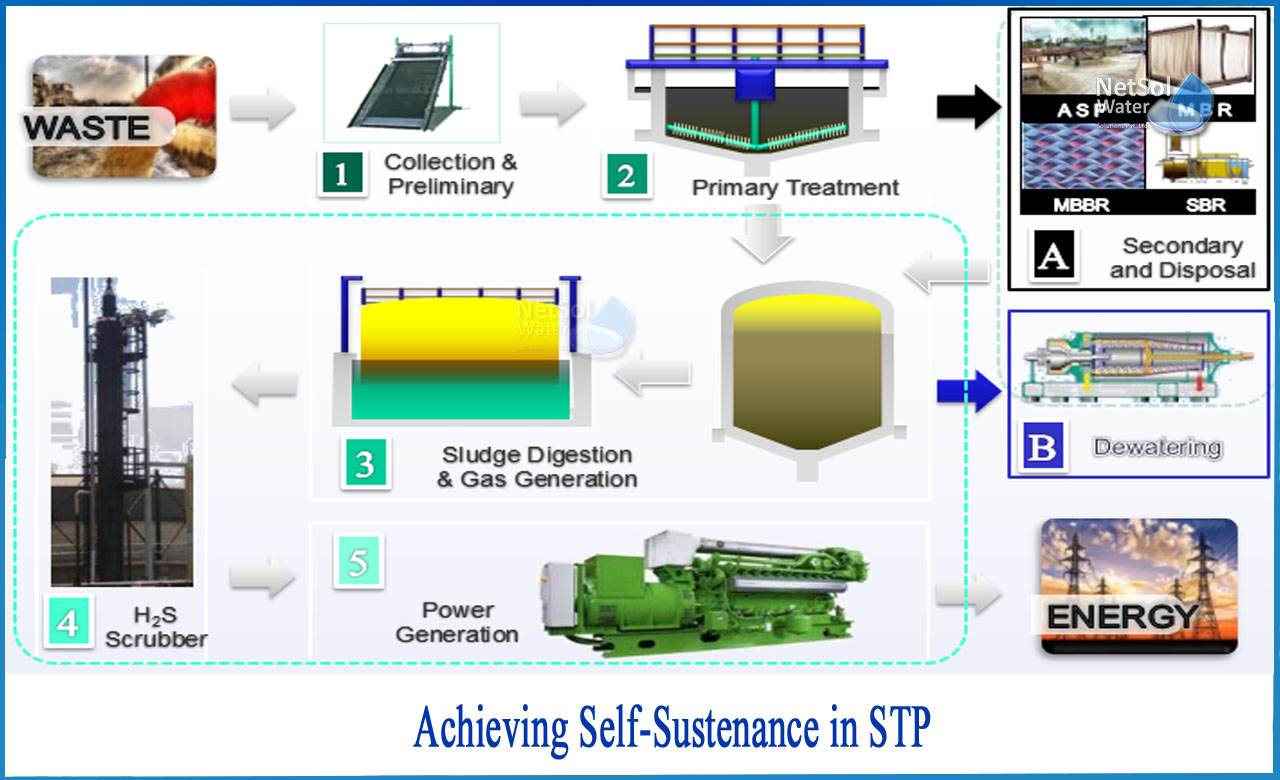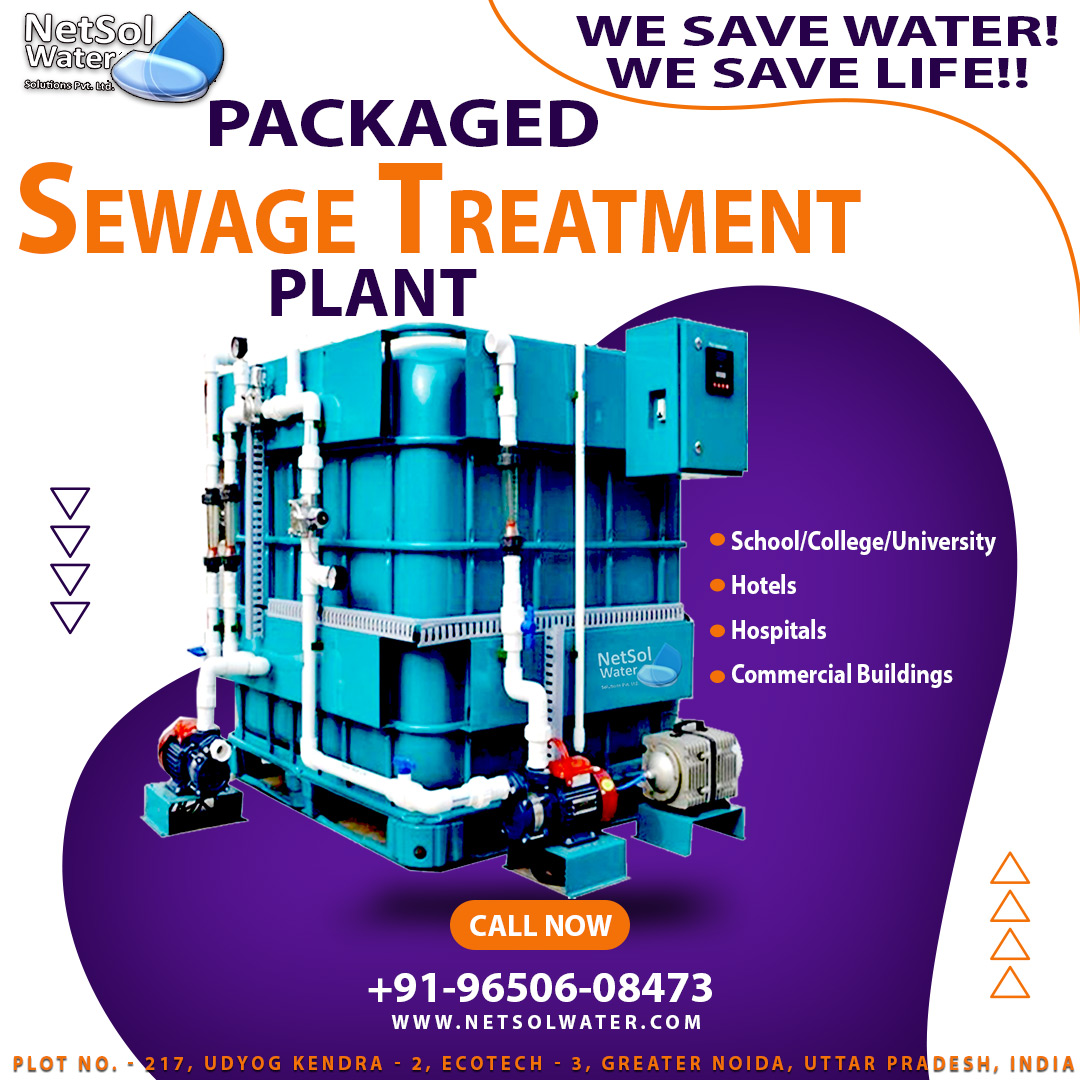How to achieving self-sustenance in sewage treatment plant?
Energy generated by WWTPs Wastewater is commonly regarded as a possible energy source. The biogas produced in the digester is the primary source of energy in a WWTP. The use of biogas for digester heating and electricity generation is seen as a sustainable method of recovering energy from WWTPs and reducing sludge. A WWTP with pre-settling and sludge digestion consumes 40% less net energy than one without sludge digestion.
Meanwhile, many WWTPs combine kitchen waste with sludge for anaerobic co-processing to stabilize kitchen wastes, which leads to substrate adjustment, increased organic loads, biogas yields, and energy recovery, improved equipment capacity factor, and lower investment. Microbiological fuel cell (MFC) technology can generate power from wastewater, but it requires significant refinement before it can be used in a practical setting. Wastewater thermal energy is a significant renewable energy source.Thermal energy from wastewater may be used to heat neighbouring households or contributed to the district heating system by employing a heat exchanger and heating pumps.
Using India as an example, at least half of the energy consumed by a WWTP may be recovered from thermal energy, totally offsetting the energy deficit caused by inadequate energy converted from surplus sludge. The heat generated by treatment operations exceeds the plant's heating energy requirements. Simultaneously, moving from wastewater to cooling water regeneration as the heat source of district heating heat pumps is another approach to deliver heat while saving power. Wind, solar, and hydroelectric energy may also be employed in specific instances. Hydroelectric power may be used in WWTPs with natural elevation inequalities.The direct utilization of wind energy is problematic due to the conventional positioning of WWTPs at low elevations. Because WWTPs span wide regions, the potential for solar energy input from WWTPs is rather considerable. However, the operating costs of solar energy must be reduced.
Difficulties in establishing energy-self-sufficient WWTPs
Harvesting energy and improving energy efficiency allow for fully self-sufficient WWTPs. However, most underdeveloped nations still lack energy-self-sufficient WWTPs. Even in industrialized nations, there is a significant disparity in energy self-sufficiency WWTPs.
It is challenging to achieve total energy self-sufficiency in WWTPs with modest capacity. MFC and its derivative technologies are still under development and have a long way to go before they can be used in engineering applications. The initial investment in building an energy self-sufficient WWTP is more than that of a standard one.Some technologies, such as CHP and photovoltaics, need a significant initial investment. Inadequate anaerobic treatment may have an impact on the surrounding environment, and leakage of CH4 and N2O is more likely to contribute to global warming and air pollution.
Meanwhile, several breakthrough remedies and streamlined techniques are being researched. As a consequence, none of the ways could be ideal for solving all of the difficulties, but they were typically demonstrated to integrate one another based on the unique necessary scenario, and all of the systems may be optimized to gather more and conserve more energy.
Conclusions
Sewage treatment normally begins with primary treatment to remove solids/grit, followed by biological treatment in a traditional activated sludge system. The primary and extra biosludge generated is thickened and digested in anaerobic sludge digestion, resulting in methane-rich biogas and well-digested biosludge ready for disposal following centrifugation. After passing through a bio-scrubber to remove hydrogen sulphide, which is harmful to the gas engine, the biogas is collected in a gas holder and utilized as fuel in a biogas engine.
Although energy self-sufficient WWTPs are unquestionably viable, there are several hurdles to building these self-sufficient WWTPs, particularly in underdeveloped nations. More work is required in terms of technology, pricing, and environmental protection and we at Netsol Water Solutions are ready to achieve more sustainability.




